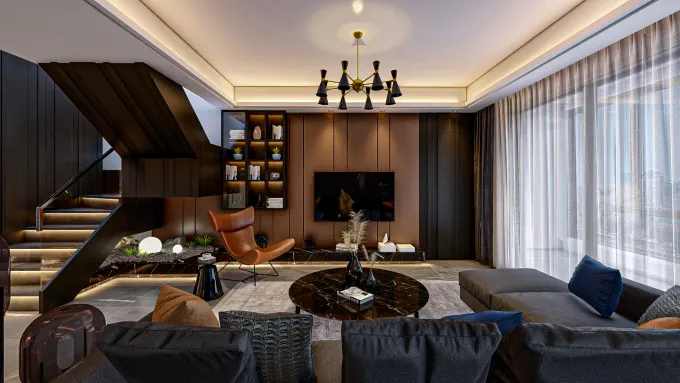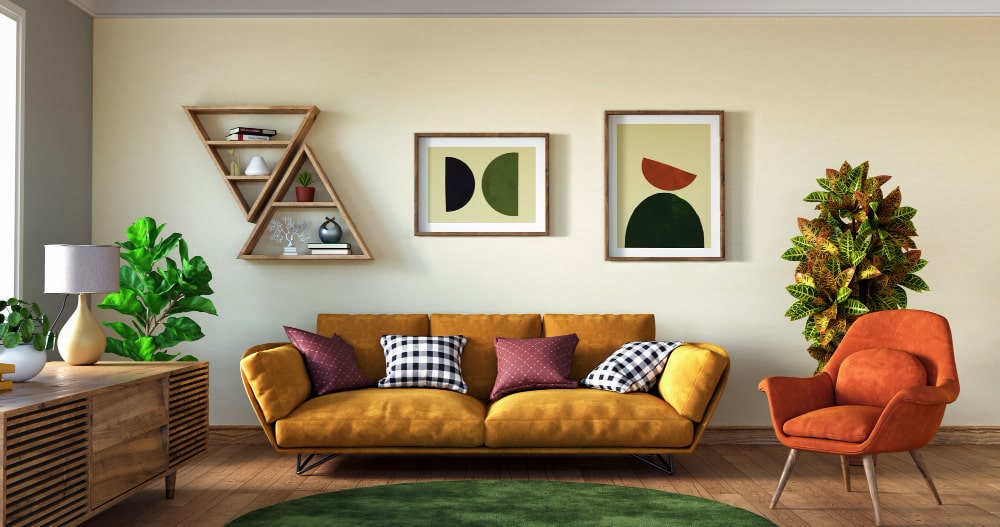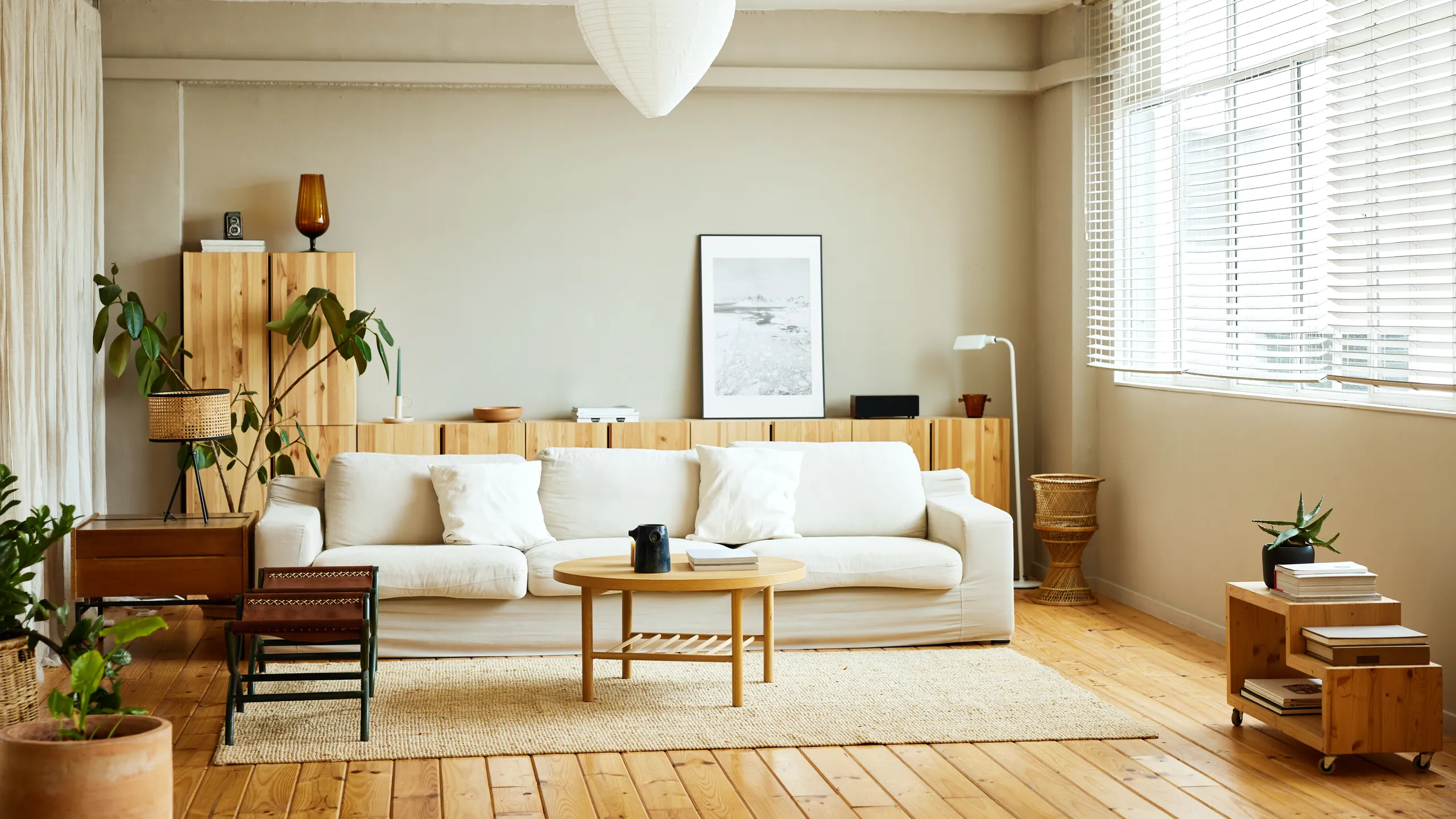With years of experience as an interior designer, I’ve had the privilege of working on a wide range of projects—from cozy apartments to sprawling homes—and one thing I’ve consistently noticed is that the most beautiful spaces share certain universal qualities. My passion for design has allowed me to transform homes and understand how subtle details and intentional choices can dramatically improve how a space looks and feels. Over time, I’ve learned that great design is more than just aesthetics; it’s about creating a home that reflects who you are and enhances your daily life.
Here are five things all beautiful homes have in common and practical tips on how you can incorporate them into your space:
1. Incorporate Natural Elements
Nature has a way of instantly transforming a space. Whether it’s houseplants, natural materials like wood and stone, or large windows that let in natural light, adding organic elements promotes tranquility and balance in your home.
How to Do It:
- Bring in Greenery: Start with easy-to-maintain plants like snake plants, succulents, or even a fiddle-leaf fig to add life to any room. These plants not only clean the air but create a calm and serene environment.
- Natural Textures: Opt for furniture or decor that integrates natural materials such as rattan, reclaimed wood, or stone. A hand-woven jute rug, for example, can add warmth and texture to your living room.
- Maximize Light: If possible, opt for sheer curtains or blinds to let natural light flood in. Or, consider placing mirrors strategically to reflect light and make smaller spaces feel larger.
Product Tips: I recommend checking out places like West Elm or CB2 for modern, natural furniture pieces, and Terrain or The Sill for high-quality houseplants.
2. Thoughtful Spatial Planning
No matter how beautiful your decor is, poor layout can ruin the functionality and flow of a home. As designer Izabela Tokarski points out, the best designs are rooted in great spatial planning.
How to Do It:
- Assess Your Needs: Before arranging furniture, think about how you use the space. For example, if you entertain frequently, prioritize open layouts with conversation areas. If the room is meant for relaxation, consider cozy nooks.
- Choose Furniture that Fits: Scale matters. Avoid cramming large furniture into small rooms or using tiny pieces in expansive spaces. If your furniture doesn’t complement the space, it won’t look or feel right.
- Test Different Layouts: Use painter’s tape to map out furniture placement or use online tools like Roomstyler to visualize layouts. Sometimes just repositioning your sofa or coffee table can completely transform a room’s flow.
Consultation Tip: If you’re not sure how to plan your space, consult with a local interior designer. Many offer layout services that can save you time and effort, ensuring the room not only looks great but also works for you.
3. Create a Focal Point
Every room needs a focal point—a piece or feature that draws the eye and serves as the anchor of the design. Without one, a room can feel disjointed.
How to Do It:
- Living Rooms: A bold sofa, gallery wall, or a stunning piece of art can create the perfect focal point. Position your seating around it for a sense of balance and flow.
- Bedrooms: Consider a statement bed with a dramatic headboard or a pair of hanging pendant lights over nightstands.
- Kitchens and Dining Rooms: A unique chandelier or an eye-catching kitchen island can become the star of the space.
Where to Shop: For unique focal pieces, look to stores like Anthropologie for statement lighting or Artful Walls for standout artwork that will grab attention.
4. Welcome Guests with a Striking Front Door
Your front door is the first impression of your home, and its design sets the tone for what lies beyond. A beautiful, well-maintained door can instantly enhance your home’s curb appeal and create a warm welcome.
How to Do It:
- Choose the Right Color: Bold colors like deep blue, rich red, or a vibrant yellow can make a statement and differentiate your home.
- Upgrade Your Hardware: Swapping out old doorknobs or installing a modern door knocker can instantly elevate the look.
- Add Decor: Think seasonal wreaths, planters with flowers, or lanterns for a personal touch.
Pro Tip: Your front door’s material matters too. Choose a sturdy wood or metal door for a polished, long-lasting look. For DIY inspiration, sites like Pinterest and Etsy offer great ideas on how to dress up your front entrance.
5. Create a Cohesive Sense of Style
A beautiful home feels seamless, and that’s achieved through a consistent design aesthetic. Whether your style is modern, rustic, or traditional, it’s essential that your design choices harmonize.
How to Do It:
- Choose a Color Palette: Pick a core color scheme and stick with it throughout your home. This could mean soft neutrals for a calming space or rich jewel tones for a more dramatic effect.
- Layer Textures: Mix materials like leather, wool, and wood to add depth and warmth. For example, in a modern home, adding a faux fur throw or a textured rug can prevent the space from feeling too cold or sterile.
- Unify with Accessories: Use similar metals, fabrics, or patterns across rooms to tie your space together. This creates a cohesive flow from one room to the next.
Resource Tip: Websites like Houzz or Apartment Therapy offer endless inspiration for cohesive styling, with ideas ranging from full-room makeovers to small tweaks that can tie your space together.
By incorporating these design principles into your home, you can create a space that not only looks beautiful but also feels harmonious and inviting. Remember, the beauty of interior design is that it’s a blend of function and style, so as you design, keep both in mind. Whether you’re doing a full remodel or just freshening up a few rooms, the key is to strike a balance between personal taste and these universal principles. Happy decorating







